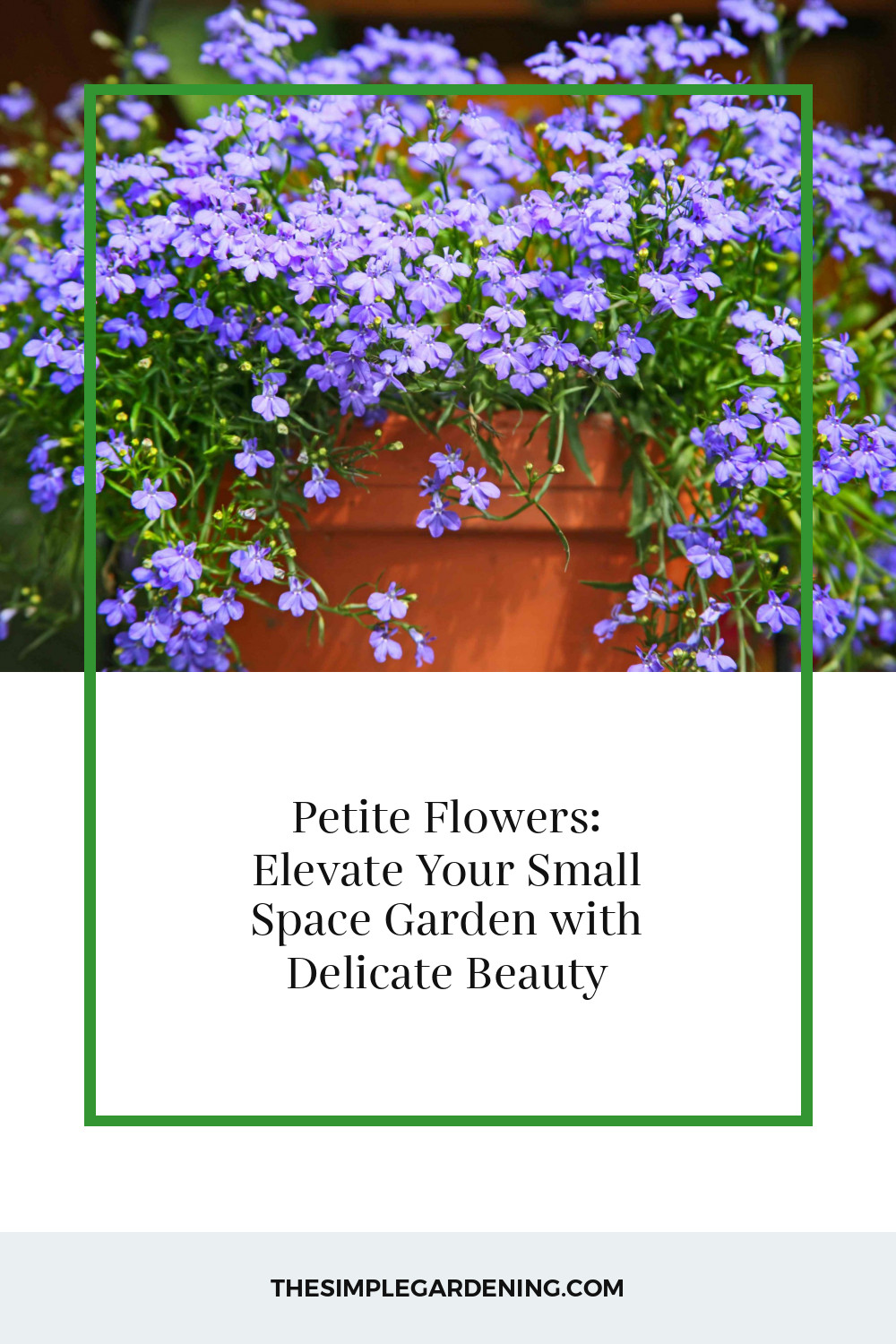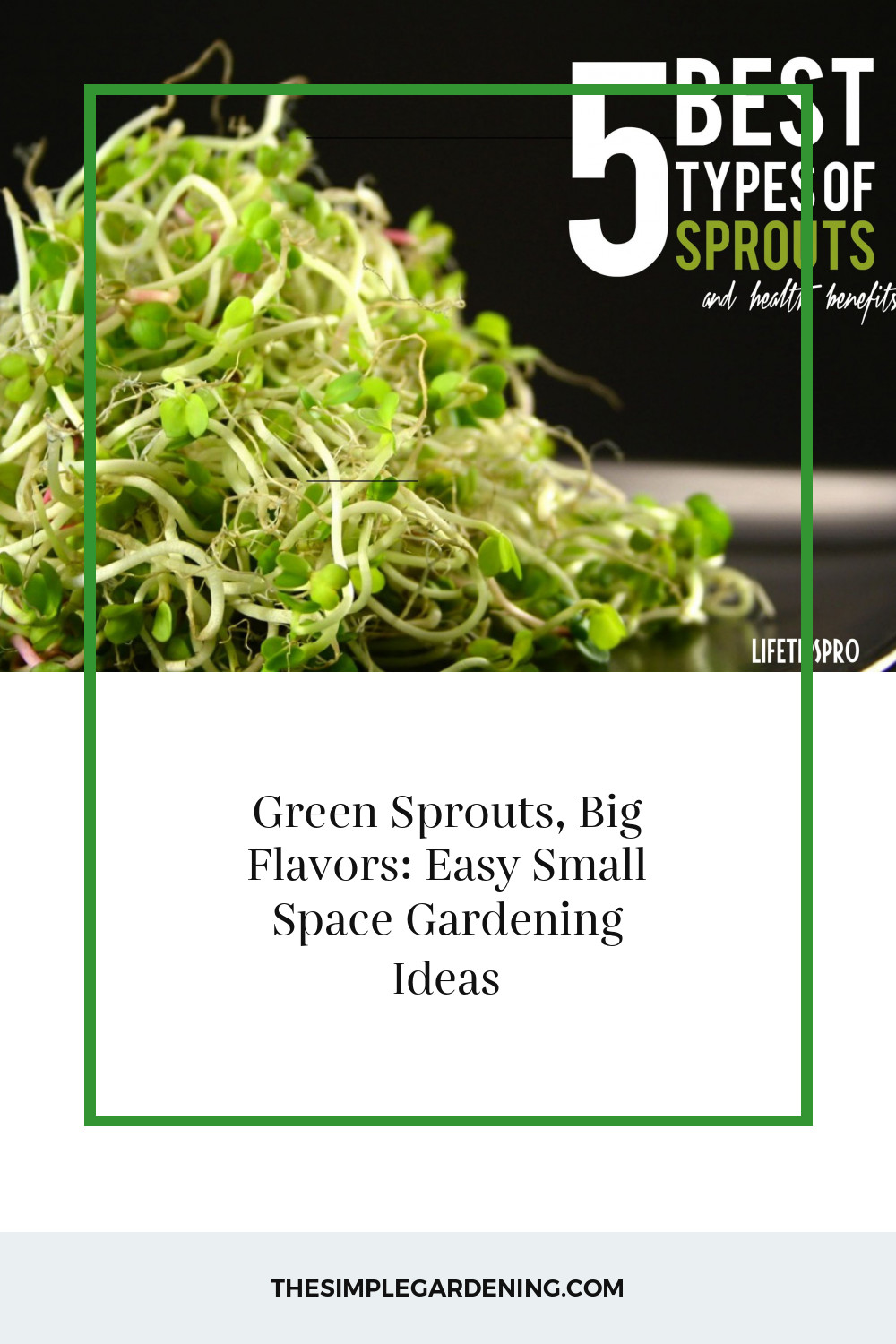Understanding the Appeal of Petite Flowers
Petite flowers, characterized by their delicate blooms and compact size, offer a charming addition to small space gardens. Their diminutive stature lends a sense of intimacy and coziness to garden settings, making them ideal for urban balconies, patios, and tiny yards. Despite their small size, these flowers pack a punch of color and fragrance, creating a vibrant oasis in even the tiniest of outdoor spaces.
Table 1: Top Petite Flowers for Small Space Gardens
| Flower Variety | Description |
|---|---|
| Alyssum | Low-growing with clusters of tiny blooms |
| Dwarf Marigold | Vibrant colors in a compact form |
| Nasturtium | Edible flowers with trailing growth |
| Calendula | Easy-to-grow with cheerful blooms |
| Lobelia | Cascading flowers in various hues |
Benefits of Small Space Gardening
Embracing petite flowers in small space gardening brings a myriad of benefits beyond mere aesthetics. These pint-sized plants offer:
- Maximized Space Utilization: Petite flowers allow gardeners to make the most of limited space, whether it’s a balcony, rooftop, or tiny backyard.
- Low Maintenance: Their small size often translates to less maintenance, making them perfect for busy urban dwellers or novice gardeners.
- Urban Biodiversity: Cultivating petite flowers attracts pollinators and beneficial insects, contributing to urban biodiversity efforts.
- Therapeutic Value: Gardening, even in small spaces, provides a therapeutic escape from the hustle and bustle of city life, promoting mental well-being.
:max_bytes(150000):strip_icc()/terracotta-pot-with-blue-lobelia-144284486-a7b69452bacc4ea787624c126a4c13e2.jpg)
Source Image: www.thespruce.com
Choosing Petite Flower Varieties
Factors to Consider When Selecting Petite Flowers
Before diving into the world of petite flowers, consider these factors to ensure success in your small space garden:
- Sunlight Requirements: Assess the amount of sunlight your space receives to choose flowers that thrive in those conditions.
- Climate Suitability: Select varieties that are well-suited to your climate zone to ensure healthy growth and blooming.
- Watering Needs: Choose flowers with similar watering requirements to simplify maintenance tasks.
- Growth Habit: Consider the growth habit of each variety—whether it’s upright, trailing, or bushy—to plan your garden layout effectively.
Table 2: Petite Flowers by Sunlight Requirements
| Flower Variety | Sunlight Requirement |
|---|---|
| Petunia | Full sun to partial shade |
| Viola | Partial shade to full sun |
| Pansy | Partial shade to full sun |
| Baby’s Breath | Full sun |
| Sweet Alyssum | Full sun to partial shade |
Top Petite Flower Varieties for Small Gardens
While the options are endless, some petite flower varieties are particularly well-suited for small gardens due to their compact size and adaptability:
Table 3: Top Petite Flowers for Small Gardens
| Flower Variety | Description |
|---|---|
| Viola | Cheerful blooms in various colors |
| Geranium | Fragrant foliage and vibrant flowers |
| Impatiens | Shade-loving with profuse blooms |
| Verbena | Trailing habit with clusters of flowers |
| Snapdragon | Vertical spikes of colorful blooms |
Planning Your Small Space Garden Layout
Assessing Available Space and Sunlight
Before designing your small space garden layout, conduct a thorough assessment of the available space and sunlight conditions:
- Measurements: Take accurate measurements of your garden area, including length, width, and any obstacles such as furniture or fixtures.
- Sunlight Exposure: Determine which areas receive direct sunlight, partial shade, or full shade throughout the day to plan accordingly.
- Microclimates: Identify microclimates within your space, such as areas prone to wind or pockets of heat, to select plants that can thrive in these conditions.
Table 4: Sunlight Exposure Zones in Small Gardens
| Sunlight Zone | Description |
|---|---|
| Full Sun | Direct sunlight for 6 or more hours per day |
| Partial Shade | Indirect sunlight or dappled shade for 4-6 hours per day |
| Full Shade | Less than 4 hours of direct sunlight per day |
Designing a Layout That Maximizes Space Utilization
Optimize your small space garden layout by incorporating the following design principles:
- Vertical Gardening: Utilize vertical space with trellises, hanging baskets, or wall-mounted planters to maximize planting area.
- Layering: Arrange plants in layers according to their height, with taller plants at the back and shorter ones at the front, to create depth and visual interest.
- Space-saving Techniques: Utilize space-saving techniques such as square foot gardening or interplanting compatible species to maximize yields in small areas.
By carefully planning your garden layout, you can create a visually appealing and functional space that maximizes every inch of available area.
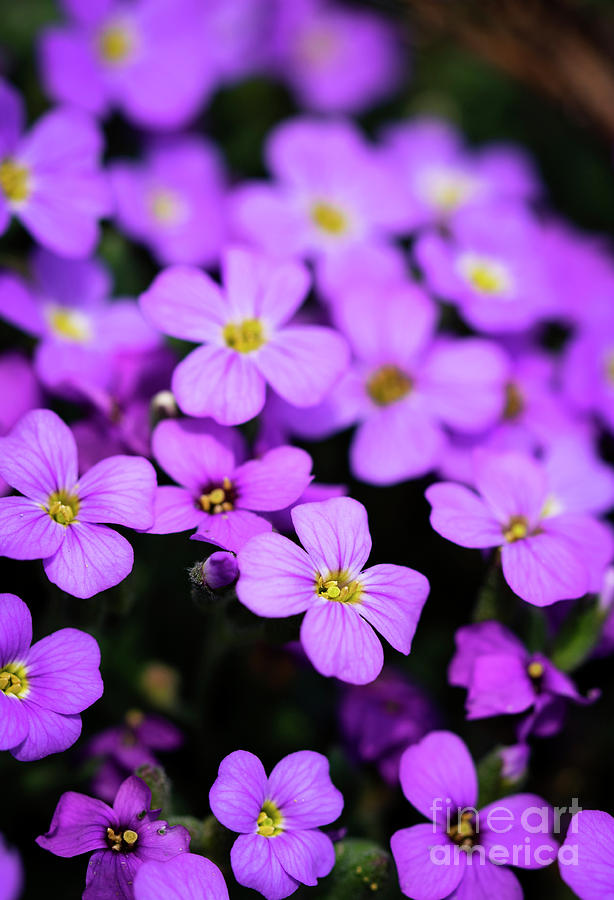
Source Image: lickmyclothes.blogspot.com
Container Gardening with Petite Flowers
Selecting the Right Containers for Small Spaces
When it comes to container gardening with petite flowers, choosing the right containers is crucial for their health and growth:
- Size and Depth: Select containers that are appropriately sized for the root systems of your chosen flowers, ensuring they have ample room to grow.
- Drainage Holes: Opt for containers with adequate drainage holes to prevent waterlogging, which can lead to root rot and other issues.
- Material: Consider the material of the containers—options include terracotta, plastic, ceramic, or fabric pots—based on factors such as durability, insulation, and aesthetics.
Table 5: Container Materials for Petite Flower Gardening
| Container Material | Pros | Cons |
|---|---|---|
| Terracotta | Porous, allows air circulation | Prone to cracking in freezing temperatures |
| Plastic | Lightweight, affordable | May degrade over time in sunlight |
| Ceramic | Aesthetic appeal, retains moisture | Heavy and prone to breakage |
| Fabric | Lightweight, breathable | Requires additional support for stability |
Tips for Proper Drainage and Soil Selection
Ensuring proper drainage and soil selection is essential for the health and vitality of petite flowers in containers:
- Drainage Layer: Place a layer of gravel or broken pottery at the bottom of the container to facilitate drainage and prevent waterlogging.
- Potting Mix: Use a high-quality potting mix specifically formulated for container gardening, which provides excellent drainage and aeration for plant roots.
- Soil Amendments: Consider adding organic matter such as compost or perlite to improve soil structure and fertility, promoting healthy root development.
By following these tips, you can create optimal growing conditions for petite flowers in containers, maximizing their potential for beauty and blooms.
Vertical Gardening Techniques
Utilizing Walls and Trellises for Vertical Gardening
Vertical gardening offers a space-saving solution for small gardens, allowing you to grow a variety of plants, including petite flowers, upwards:
- Wall-mounted Planters: Install wall-mounted planters or vertical gardening systems to transform bare walls into green spaces, adding visual interest and maximizing planting area.
- Trellises and Arbors: Use trellises or arbors to support climbing or trailing plants, such as vines or climbers, creating vertical accents and adding dimension to your garden design.
Table 6: Vertical Gardening Structures for Small Spaces
| Vertical Structure | Description |
|---|---|
| Wall-mounted Planters | Attachable containers for vertical planting |
| Trellises | Framework for supporting climbing or trailing plants |
| Arbors | Archway structures for vertical accents in gardens |
Best Petite Flowers for Vertical Growing
When selecting petite flowers for vertical gardening, consider varieties that are well-suited to climbing or trailing habits:
Table 7: Petite Flowers Suitable for Vertical Gardening
| Flower Variety | Growth Habit |
|---|---|
| Morning Glory | Climbing vine with colorful blooms |
| Sweet Pea | Fragrant flowers on climbing stems |
| Climbing Nasturtium | Edible flowers with trailing growth |
| Black-eyed Susan Vine | Profuse blooms on twining stems |
By incorporating vertical gardening techniques and selecting appropriate petite flower varieties, you can maximize space and create a lush, vertical oasis in your small garden.
:max_bytes(150000):strip_icc()/2664281171_579aa783d8_o-5b54fb7f46e0fb003756101b.jpg)
Source Image: www.thespruce.com
Companion Planting with Petite Flowers
Understanding Companion Planting Principles
Companion planting involves strategically pairing plants to enhance growth, repel pests, and improve overall garden health. When it comes to petite flowers in small space gardening, companion planting can play a crucial role in optimizing space and promoting biodiversity:
- Beneficial Relationships: Certain plants have symbiotic relationships, where one species provides benefits to the other, such as nitrogen fixation or pest repellent properties.
- Pest Control: Some plants naturally repel pests or attract beneficial insects, reducing the need for chemical pesticides and promoting a healthier garden ecosystem.
- Space Utilization: Companion planting allows for efficient use of space by interplanting compatible species with similar growth requirements.
Pairing Petite Flowers with Vegetables and Herbs
Pairing petite flowers with vegetables and herbs in small space gardens not only enhances aesthetics but also provides practical benefits such as pest control and improved pollination:
Table 8: Companion Planting Combinations for Small Gardens
| Petite Flower | Companion Plants | Benefits |
|---|---|---|
| Marigold | Tomatoes, peppers, basil | Repels nematodes and other pests |
| Nasturtium | Cucumbers, squash, beans | Attracts beneficial insects like bees |
| Lavender | Rosemary, thyme, sage | Repels mosquitoes and other pests |
| Chamomile | Cabbage, onions, mint | Improves soil health and attracts pollinators |
By incorporating companion planting principles into your small space garden, you can create a harmonious and mutually beneficial ecosystem that supports the growth and vitality of all plants involved.
Seasonal Planting and Succession Planting
Planning for Continuous Blooms Throughout the Seasons
To ensure your small space garden remains vibrant and colorful year-round, plan for seasonal planting and succession planting:
- Spring: Choose early-blooming petite flowers such as pansies, violas, and tulips to kickstart the growing season with a burst of color.
- Summer: Transition to heat-tolerant varieties like zinnias, cosmos, and sunflowers for a profusion of blooms during the warmer months.
- Fall: Select fall-blooming flowers such as asters, chrysanthemums, and ornamental kale to extend the beauty of your garden into autumn.
Table 9: Seasonal Planting Guide for Small Space Gardens
| Season | Petite Flowers |
|---|---|
| Spring | Pansies, tulips, violas |
| Summer | Zinnias, cosmos, sunflowers |
| Fall | Asters, chrysanthemums, ornamental kale |
Succession Planting Strategies for Small Gardens
Succession planting involves staggered planting of crops to ensure a continuous harvest throughout the growing season. In small space gardens, succession planting can maximize yields and optimize space utilization:
- Fast-growing Varieties: Choose petite flowers with short maturity periods to allow for quick turnover and continuous planting cycles.
- Interplanting: Intersperse petite flowers with quick-growing vegetables or herbs to make the most of limited space and extend the growing season.
By implementing seasonal planting and succession planting strategies, you can maintain a thriving and colorful garden in even the smallest of spaces, delighting both the eye and the palate.

Source Image: www.pinterest.com
Soil Preparation and Maintenance
Soil Amendment Tips for Small Garden Spaces
Proper soil preparation is essential for the health and vitality of petite flowers in small garden spaces. Consider these soil amendment tips to ensure optimal growing conditions:
- Organic Matter: Incorporate organic matter such as compost, aged manure, or leaf mold into the soil to improve its structure, fertility, and water retention.
- pH Balance: Test the soil pH and amend as necessary to ensure it falls within the optimal range for your chosen petite flowers, typically slightly acidic to neutral (pH 6.0-7.0).
- Mulching: Apply a layer of organic mulch, such as shredded bark or straw, around plants to suppress weeds, retain moisture, and regulate soil temperature.
Table 10: Common Soil Amendments for Small Gardens
| Soil Amendment | Description | Benefits |
|---|---|---|
| Compost | Decomposed organic matter | Improves soil structure and fertility |
| Perlite | Lightweight volcanic rock additive | Enhances drainage and aeration |
| Vermiculite | Naturally occurring mineral additive | Retains moisture and improves aeration |
| Peat Moss | Decomposed sphagnum moss | Acidifies soil and improves water retention |
Techniques for Maintaining Soil Health in Containers
Container-grown petite flowers require special attention to soil health due to limited root space and potential nutrient depletion. Follow these techniques to maintain soil health in containers:
- Regular Watering: Monitor soil moisture levels closely and water container plants as needed to prevent drought stress or waterlogging.
- Fertilization: Apply a balanced, water-soluble fertilizer according to the specific needs of your petite flowers, following manufacturer instructions for dilution and application frequency.
- Topdressing: Periodically topdress container soil with compost or slow-release organic fertilizer to replenish nutrients and improve soil structure.
By implementing these soil preparation and maintenance techniques, you can create an optimal growing environment for petite flowers in both small garden beds and containers.
Watering and Fertilizing Petite Flowers
Proper Watering Schedules for Petite Flowers in Small Gardens
Watering is crucial for the health and vigor of petite flowers, especially in small garden spaces with limited access to moisture. Follow these guidelines for proper watering:
- Monitor Soil Moisture: Check the soil moisture regularly by inserting your finger into the soil. Water when the top inch feels dry to the touch.
- Deep Watering: Water deeply and thoroughly, ensuring moisture reaches the root zone. Avoid frequent, shallow watering, which can encourage shallow root growth.
- Mulching: Apply a layer of organic mulch around plants to help retain soil moisture, suppress weeds, and regulate soil temperature.
Table 11: Watering Guidelines for Petite Flowers
| Watering Method | Frequency | Description |
|---|---|---|
| Deep Watering | Once or twice per week | Ensure moisture penetrates the root zone |
| Drip Irrigation | Regular, consistent schedule | Provides water directly to the root zone |
| Self-watering | Varied depending on system | Automatically delivers water as needed |
| Hand Watering | As needed based on soil moisture | Manual watering with a hose or watering can |
Choosing the Right Fertilizers for Container-Grown Flowers
Fertilizing container-grown petite flowers is essential for replenishing nutrients depleted by frequent watering and ensuring healthy growth. Consider these factors when choosing fertilizers:
- Balanced Formulation: Select a balanced, water-soluble fertilizer with equal proportions of nitrogen, phosphorus, and potassium (N-P-K) to promote overall plant health and blooming.
- Frequency: Fertilize container plants every 2-4 weeks during the growing season, following package instructions for dilution and application rates.
- Organic Options: Opt for organic fertilizers such as compost tea, fish emulsion, or seaweed extract for a more sustainable and environmentally friendly approach to feeding your plants.
By adhering to proper watering schedules and choosing the right fertilizers for container-grown petite flowers, you can support their growth and bloom cycles, ensuring a beautiful and bountiful display in your small garden space.
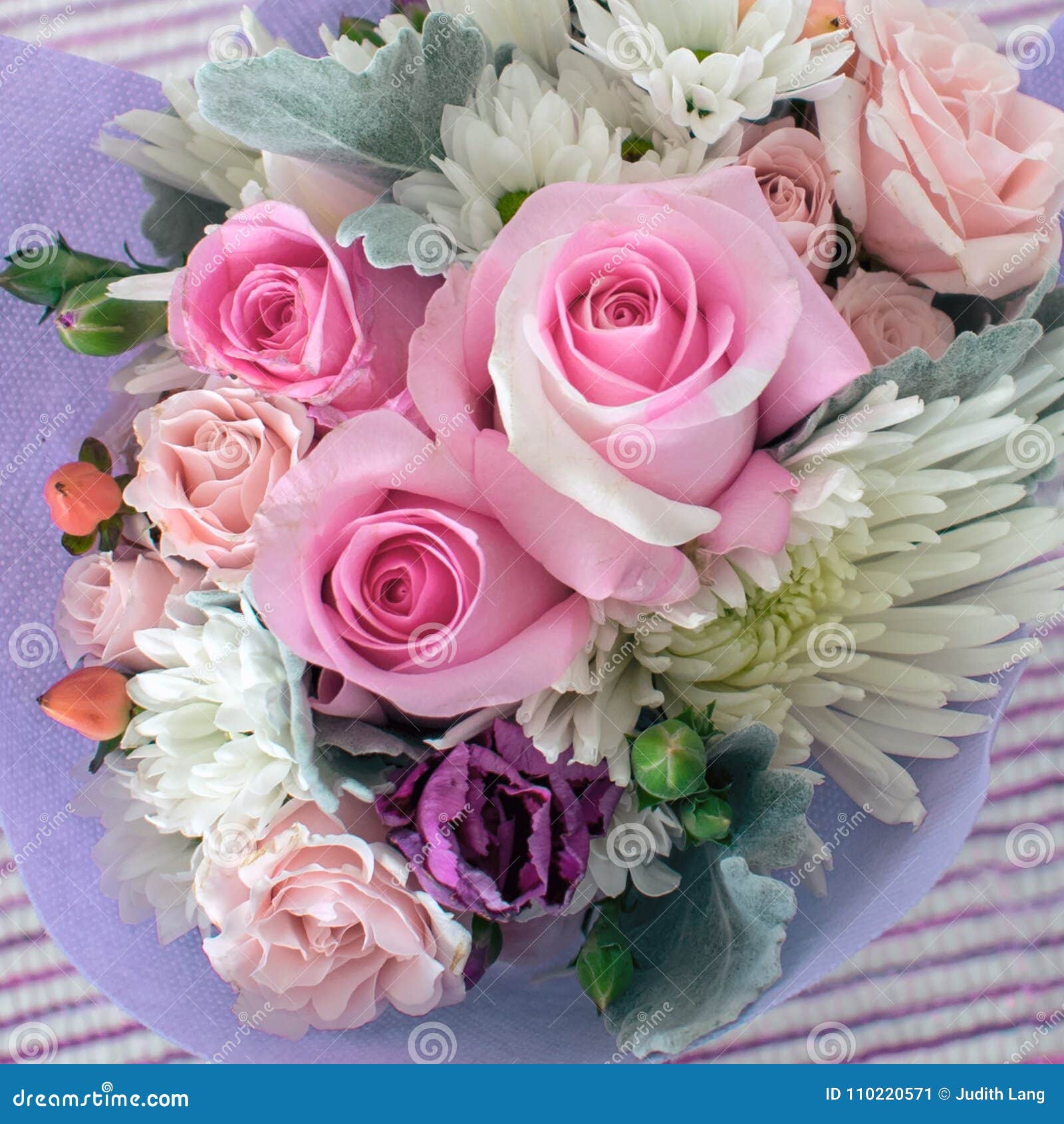
Source Image: www.dreamstime.com
Pest and Disease Management
Identifying Common Pests and Diseases in Small Gardens
Despite their diminutive size, petite flowers are not immune to pests and diseases. It’s essential to be vigilant and proactive in identifying and managing common garden pests and diseases:
- Common Pests: Keep an eye out for pests such as aphids, whiteflies, snails, and slugs, which can feed on plant foliage, buds, and blooms.
- Signs of Disease: Look for symptoms of common plant diseases such as powdery mildew, leaf spot, and root rot, including discolored foliage, wilting, or stunted growth.
- Integrated Pest Management (IPM): Implement an integrated pest management approach, which combines cultural, mechanical, and biological control methods to manage pests while minimizing environmental impact.
Table 12: Common Pests and Diseases of Petite Flowers
| Pest/Disease | Description | Control Methods |
|---|---|---|
| Aphids | Small, sap-sucking insects | Hose off with water, introduce beneficial insects |
| Powdery Mildew | Fungal disease causing white powdery growth | Prune affected foliage, apply fungicidal spray |
| Slugs and Snails | Mollusks that feed on plant foliage | Handpick, use beer traps, apply diatomaceous earth |
| Botrytis Blight | Fungal disease causing gray mold | Remove infected plant parts, improve air circulation |
Organic Pest Control Methods for Petite Flowers
For gardeners practicing organic gardening principles, there are several effective pest control methods that minimize the use of synthetic chemicals:
- Neem Oil: Neem oil is a natural insecticide derived from the neem tree that repels and disrupts the feeding behavior of many common garden pests.
- Insecticidal Soap: Insecticidal soaps are mild, biodegradable soaps that effectively control soft-bodied pests such as aphids, whiteflies, and spider mites.
- Beneficial Insects: Introduce beneficial insects such as ladybugs, lacewings, and predatory mites to the garden to prey on pest populations and help maintain ecological balance.
By incorporating organic pest control methods into your small garden management practices, you can effectively manage pests while minimizing harm to beneficial insects and the environment.
Creating a Pollinator-Friendly Environment
Importance of Pollinators in Small Space Gardening
Pollinators play a vital role in the reproduction of flowering plants, including petite flowers, by transferring pollen from one flower to another:
- Increased Yield: Pollinator visits increase fruit and seed set in many plants, resulting in higher yields for edible crops and more abundant blooms for ornamental flowers.
- Biodiversity: Supporting pollinator populations contributes to overall biodiversity and ecosystem health, benefiting both plants and animals in the garden.
- Ecological Services: Pollinators provide essential ecological services such as pollination, which are critical for the reproduction of many plant species and the maintenance of healthy ecosystems.
Table 13: Common Pollinators and Their Importance
| Pollinator | Importance | Examples of Pollinator Species |
|---|---|---|
| Bees | Key pollinators of many flowering plants | Honeybees, bumblebees, solitary bees |
| Butterflies | Important pollinators of nectar-rich flowers | Monarchs, swallowtails, painted ladies |
| Hoverflies | Efficient pollinators with hover-flight capabilities | Syrphid flies, bee flies, hoverflies |
| Moths | Nighttime pollinators attracted to fragrant flowers | Sphinx moths, hawk moths, noctuids |
Attracting Bees, Butterflies, and Other Pollinators to Your Garden
To create a pollinator-friendly environment in your small garden, consider the following strategies:
- Plant Selection: Choose petite flowers with nectar-rich blooms and a variety of flower shapes and colors to attract a diverse range of pollinators.
- Continuous Blooms: Aim for continuous blooms throughout the growing season to provide a consistent food source for pollinators, from early spring to late fall.
- Habitat Enhancement: Provide nesting sites and habitat features such as bee hotels, butterfly puddling stations, and native plantings to support pollinator populations year-round.
By actively promoting pollinator-friendly practices in your small garden, you can contribute to the conservation of these essential creatures while enjoying the benefits of increased pollination and garden biodiversity.

Source Image: pixabay.com
Seasonal Maintenance Tasks
Spring, Summer, Fall, and Winter Maintenance Schedules
Maintaining a small space garden throughout the seasons requires attention to seasonal tasks to ensure the health and beauty of petite flowers:
- Spring: Prepare garden beds by removing debris, dividing perennials, and applying compost. Plant cool-season annuals and perennials, and begin pest and disease monitoring.
- Summer: Water regularly, deadhead spent blooms, and fertilize container plants. Monitor for pests and diseases, and provide shade or shelter during heatwaves.
- Fall: Clean up garden beds, plant fall-blooming flowers, and mulch to insulate soil. Divide and transplant perennials as needed, and prepare tender plants for winter.
- Winter: Protect tender plants from frost, provide supplemental lighting for indoor plants, and plan for next year’s garden by ordering seeds and bulbs.
Table 14: Seasonal Maintenance Tasks for Small Space Gardens
| Season | Maintenance Tasks |
|---|---|
| Spring | Prepare garden beds, plant cool-season flowers |
| Summer | Water, deadhead, fertilize, monitor for pests and diseases |
| Fall | Clean up, plant fall-blooming flowers, mulch |
| Winter | Protect plants from frost, plan for next year’s garden |
Pruning and Deadheading Techniques for Petite Flowers
Pruning and deadheading are essential maintenance tasks to promote healthy growth and prolonged blooming in petite flowers:
- Deadheading: Remove spent blooms regularly to encourage continuous flowering and prevent the formation of seed heads, which can divert energy away from new growth.
- Pruning: Trim back leggy or overgrown stems to maintain compact growth and shape. Prune away diseased or damaged foliage to prevent the spread of pathogens.
Table 15: Pruning and Deadheading Guidelines for Petite Flowers
| Task | Timing | Description |
|---|---|---|
| Deadheading | Throughout the growing season | Remove spent blooms to encourage new growth |
| Pruning | As needed | Trim back leggy growth and remove diseased foliage |
By staying on top of seasonal maintenance tasks and employing proper pruning and deadheading techniques, you can keep your small space garden looking its best year-round.
Harvesting and Preserving Petite Flowers
Harvesting Tips for Cut Flowers in Small Gardens
Enjoy the beauty of petite flowers indoors by harvesting blooms for fresh-cut arrangements. Follow these tips for successful flower harvesting:
- Timing: Harvest flowers early in the morning or late in the evening when they are most hydrated and have the highest moisture content.
- Tools: Use sharp, clean pruners or scissors to make clean cuts, and place harvested flowers immediately into a bucket of water to prevent wilting.
- Longevity: Cut flowers at their peak of freshness, just as they begin to open, for maximum vase life. Remove any foliage that will be submerged in water to prevent bacterial growth.
Table 16: Harvesting Guidelines for Petite Flowers
| Flower Variety | Harvesting Tips |
|---|---|
| Roses | Cut stems at a 45-degree angle |
| Dahlias | Harvest when blooms are 3/4 open |
| Lisianthus | Cut stems just as first flower opens |
| Ranunculus | Harvest when buds feel soft to the touch |
Techniques for Drying and Preserving Petite Blooms
Extend the beauty of petite flowers by drying and preserving blooms for long-lasting enjoyment:
- Air Drying: Hang small bunches of flowers upside down in a dry, dark, and well-ventilated area to air dry naturally. This method works well for flowers with sturdy stems and petals, such as lavender, statice, and strawflowers.
- Pressing: Press delicate blooms between layers of absorbent paper or in a flower press to flatten and preserve them for use in crafts or as decorative accents. Ideal for flowers with thin, delicate petals, such as pansies, violas, and forget-me-nots.
Table 17: Techniques for Drying and Preserving Petite Blooms
| Preservation Method | Flowers Suitable for Preservation |
|---|---|
| Air Drying | Lavender, statice, strawflowers |
| Pressing | Pansies, violas, forget-me-nots |
By mastering harvesting and preservation techniques, you can enjoy the beauty of petite flowers long after they’ve faded from the garden.
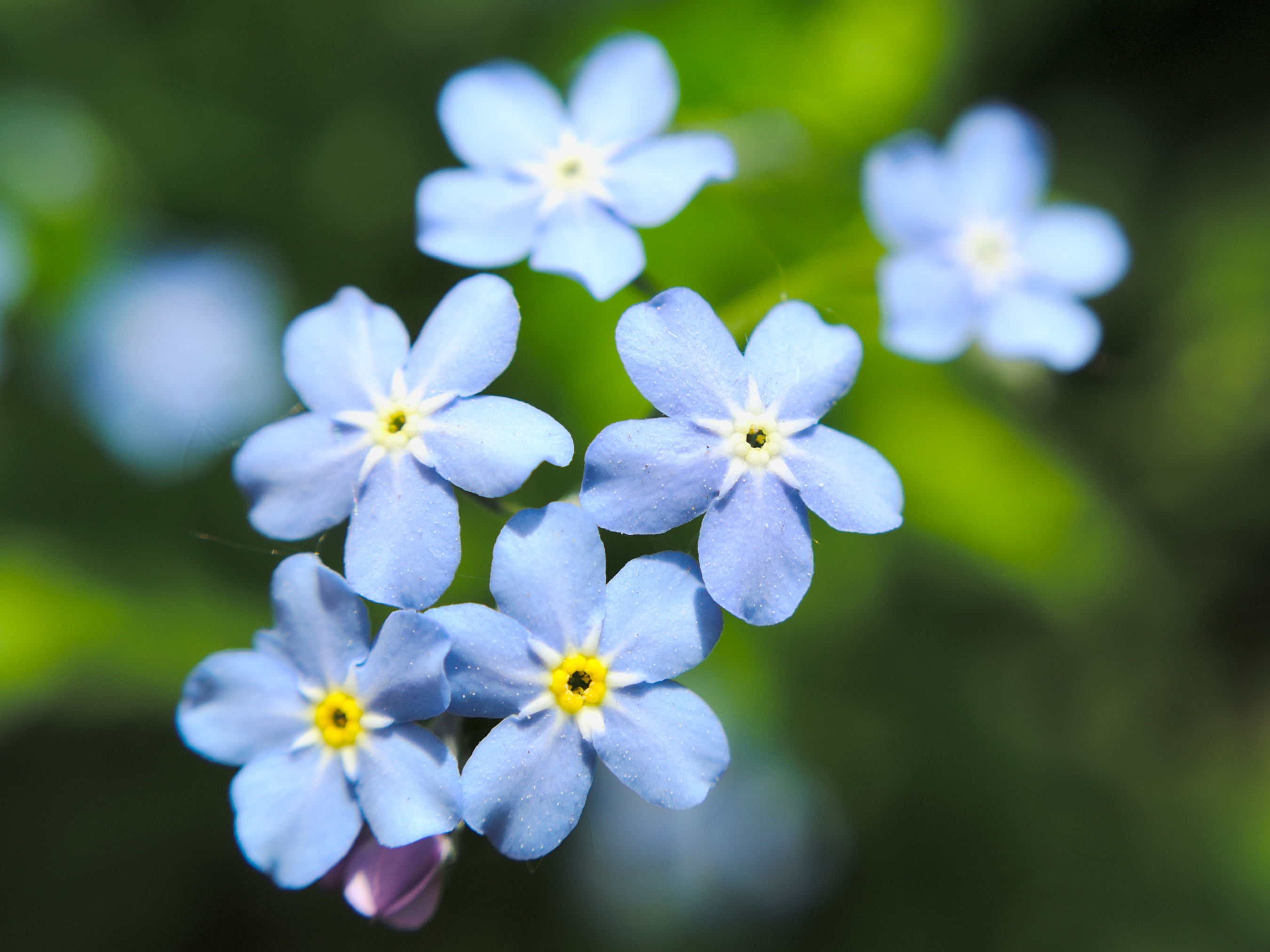
Source Image: jooinn.com
Creative Design Ideas for Small Gardens
Incorporating Color and Texture into Small Garden Designs
Designing a visually appealing small garden involves careful consideration of color, texture, and spatial arrangement:
- Color Scheme: Choose a cohesive color palette for your garden, incorporating a mix of complementary and contrasting colors to create visual interest. Consider the mood and atmosphere you want to evoke—soft pastels for a tranquil oasis or bold primaries for a vibrant energy.
- Texture: Add depth and dimension to your garden design by incorporating a variety of textures, from soft, billowy blooms to spiky foliage and glossy leaves. Contrast smooth surfaces with rough, matte with shiny, and coarse with fine to create tactile intrigue.
- Focal Points: Create focal points or visual anchors within your garden, such as a striking container arrangement, a sculptural element, or a specimen plant with unique form or color. Focal points draw the eye and provide a sense of cohesion and purpose to the space.
Table 18: Design Elements for Small Garden Visual Appeal
| Design Element | Description |
|---|---|
| Color Scheme | Cohesive palette of complementary or contrasting colors |
| Texture | Variety of tactile surfaces and plant forms |
| Focal Points | Striking elements that draw the eye and provide visual interest |
Creating Focal Points and Visual Interest with Petite Flowers
Petite flowers can serve as focal points or accent features in small garden designs, adding charm and personality to the space:
- Container Gardens: Create eye-catching container arrangements with a mix of petite flowers, foliage plants, and trailing vines. Experiment with different container shapes, sizes, and materials to add visual intrigue.
- Vertical Accents: Use trellises, obelisks, or arches to showcase climbing or trailing petite flowers, creating vertical interest and maximizing planting area.
- Edging and Borders: Line garden beds or pathways with low-growing petite flowers to define spaces and add a pop of color along borders and edges.
By strategically incorporating petite flowers into your small garden design, you can enhance its visual appeal and create a dynamic and inviting outdoor space.
Troubleshooting Common Challenges
Dealing with Limited Space Constraints
Maximizing space in a small garden requires creative problem-solving and strategic planning:
- Vertical Solutions: Utilize vertical space with trellises, wall-mounted planters, or hanging baskets to grow plants upwards and free up valuable ground space.
- Multi-functional Design: Choose plants that serve multiple purposes, such as edible flowers or herbs, to maximize productivity and aesthetic appeal in limited space.
- Compact Varieties: Opt for dwarf or compact varieties of plants, including petite flowers, that are well-suited to small gardens and containers.

Source Image: www.pinterest.ph
Table 19: Solutions for Dealing with Limited Space Constraints
| Space Constraint | Solutions |
|---|---|
| Vertical Space | Utilize trellises, wall-mounted planters, or hanging baskets |
| Choose climbing or trailing plants to maximize vertical growing space | |
| Incorporate tiered shelving or stacked containers for vertical gardening |
Overcoming Environmental Challenges in Small Gardens
Small gardens may face environmental challenges such as limited sunlight, poor soil quality, or harsh weather conditions. Here’s how to overcome them:
- Sunlight Optimization: Place containers strategically to maximize sunlight exposure, and choose shade-tolerant plants for areas with limited light.
- Soil Improvement: Amend poor-quality soil with organic matter, such as compost or aged manure, to improve fertility and drainage.
- Weather Protection: Provide shelter or protection for delicate plants during extreme weather events, such as frost or heavy rainfall, using cloches, row covers, or temporary shelters.
Table 20: Strategies for Overcoming Environmental Challenges
| Environmental Challenge | Strategies |
|---|---|
| Limited Sunlight | Optimize placement of containers |
| Choose shade-tolerant plants | |
| Poor Soil Quality | Amend soil with organic matter |
| Consider raised beds or container gardening | |
| Harsh Weather Conditions | Provide temporary shelter or protection |
| Use season extenders such as cloches or row covers |
By implementing these strategies, you can mitigate environmental challenges and create a thriving small garden oasis that flourishes despite its limitations.
Petite flowers offer a delightful addition to small space gardening, bringing beauty, charm, and biodiversity to urban balconies, patios, and tiny yards. By understanding the appeal of petite flowers and carefully selecting suitable varieties, planning an efficient garden layout, incorporating vertical gardening techniques, and embracing companion planting principles, you can create a vibrant and sustainable small garden paradise.
From seasonal planting and succession planting to soil preparation, pest management, and creating a pollinator-friendly environment, this comprehensive guide equips you with the knowledge and techniques needed to cultivate petite flowers successfully in small garden spaces. By following the provided tips for seasonal maintenance, harvesting and preserving blooms, and implementing creative design ideas, you can transform your small garden into a visually stunning and functional outdoor retreat.
Despite the challenges of limited space and environmental constraints, with creativity, careful planning, and a touch of green-thumb magic, you can overcome obstacles and cultivate a flourishing petite flower garden that brings joy and tranquility to your outdoor living space.
So roll up your sleeves, grab your gardening tools, and let the beauty of petite flowers transform your small space into a vibrant botanical haven!

